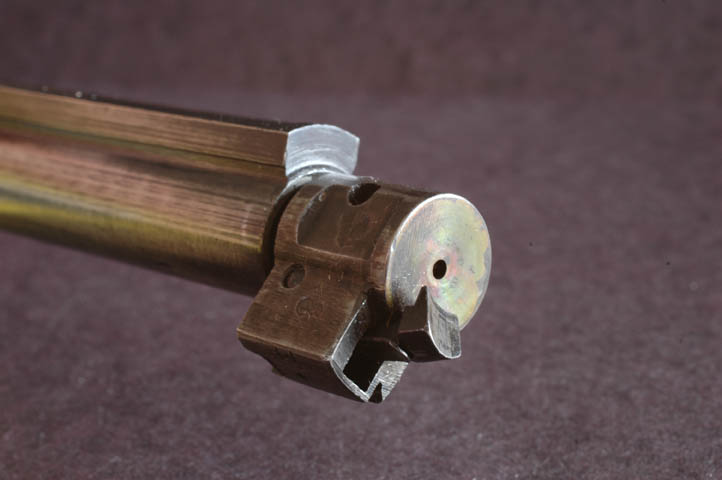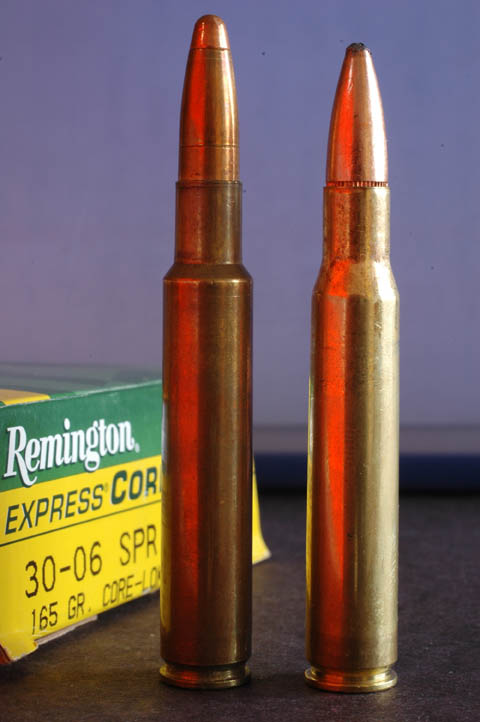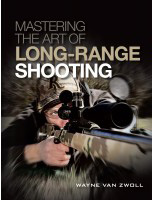

Headspace, measured from the bolt face to the cartridge stop in the chamber, is set during barrel chambering and installation.
The barrel nut on Savage 110 rifles is a clever way to make headspacing easier and cheaper. British SMLE rifles have replaceable bolt heads that varied slightly in length, for a quick field fix of improper headspace.

But as a handloader, you control effective headspace, because in sizing cases, you determine the relationship of cartridge to chamber. Even when the barrel is properly reamed and expertly installed, errors in case preparation and loading can introduce headspace problems.
Once I was sizing cases for a wildcat 6mm cartridge, the .240 Hawk. I set the die to full-length size, to ensure the cartridges would easily fit the chamber. My first shot blew gas from all crevices of the stout Remington 700 action.
The case showed a circumferential crack forward of the belt. Because the loads were not stiff, and because the bolt lift did not indicate high pressure, I fired another round. Same result. I compared sized cases with the fired cases. The sized .240 hulls were shorter by nearly .1 inch.
So I unscrewed the sizing die until it hung 1/8 inch shy of contacting the shell-holder. The first case sized at that setting wouldn’t chamber. Lowering the die incrementally and trying the case at each setting, I finally closed the bolt.
At this point, the die and shell-holder were .1 inch apart. Unlike most commercial dies, this one reduced case length excessively when flush with the shell-holder. It made the case .1 shorter than the chamber.
When I fired those first rounds, the striker drove the case forward .1 inch, and the rear of the case backed up .1 inch against the bolt, pulling the brass apart just ahead of the web.
Full-length sizing compresses a cartridge case; firing stretches it. Think about what happens after repeated bending of the tab on a soda can. To prolong case life, neck-size only, so the brass moves little upon firing.
Because a cooling hull shrinks after firing (otherwise it wouldn’t easily extract), there’s no need to further reduce its dimensions unless you plan to use the ammunition in another rifle that has a slightly smaller chamber.

The only other reason to full-length size (or to use small-base dies that squeeze cases down even further) is to feed autoloading or lever- or slide-action rifles with little camming power. Some hunters full-length size the cases they’ll use on a hunt, to ensure easy chambering.
Neck sizing is a particularly good practice with belted cases, because chambers for these hulls are often cut generously up front. The critical dimension, after all, is the distance from bolt face to belt face – .220 to .224, “go” to “no go.” If you full-length-size belted magnums, you may be shortening the head-to-shoulder span considerably each time—which means the case stretches a lot at each firing. Eventually (sometimes soon), you’ll notice a white ring forming around the case just ahead of the belt.
If you insert a straightened paper clip with a small “L” bend at the end and feel around the inside of the case, you may detect a slight indentation forward of the web. The white ring signals a thinning of the case there and the case will separate if you keep full-length sizing the case.
Rechambering rifles to Improved, or sharp-shouldered, cartridges should not change headspace measurement. The reduced body taper and steeper shoulder angle provide greater case capacity, but the datum point on an altered shoulder should remain the original distance from the bolt face.
That’s why you can fire factory ammunition in an Improved chamber safely. True wildcats that require case forming in dies must sometimes be given a false shoulder to serve as the chamber stop before firing full-power loads.
Headspace is a length measurement. It has nothing to do with diameter. After long use, reamers cut slightly smaller chambers than when new. New reamers or those used aggressively can bore oversize chambers. Headspace can change over time. With each firing of your centerfire rifle, some compression of the locking lugs and lug seats occurs.
The elasticity of the steel keeps headspace essentially the same. But many firings with heavy loads can drain that elasticity and cause a permanent increase in headspace.
A rifle with hard lugs and soft seats and generous headspace can eventually develop so much headspace that a field gauge can be chambered. At this point the rifle is unsafe.


![Best Concealed Carry Guns In 2025 [Field Tested] Wilson Combat EDC X9S 1](https://gundigest.com/wp-content/uploads/Wilson-Combat-EDC-X9S-1-324x160.jpg)


![Best 9mm Carbine: Affordable PCCs [Tested] Ruger Carbine Shooting](https://gundigest.com/wp-content/uploads/Ruger-Carbine-Shooting-100x70.jpg)
![Best AR-15: Top Options Available Today [Field Tested] Harrington and Richardson PSA XM177E2 feature](https://gundigest.com/wp-content/uploads/Harrington-and-Richardson-PSA-XM177E2-feature-100x70.jpg)

Once again An author without the facts. Handloading DOES NOT AFFECT HEADSPACING! Headspacing is the relationship between a specific point of the CHAMBER and the BOLTFACE and handloading does NOT change it. However an improperly sized cartridge case can cause the same dangerous situation as and oversized headspace. STOP publishing falsehoods and bad information! You are destroying the integrety of shooting sports with this false information!
Scotts, you need to get a grip. READ the article again. Nowhere does he say handloading changes the headspace in the chamber. He states that aggressive sizing of the cartridge with a full length die or even with a neck die can change the length of the cartridge. Affectively increasing headspace between the cartridge and the chamber.
Also he said HIGH POWER loads over time cold change the headspacing causing excessive wear on the bolt and chamber.
Great article…